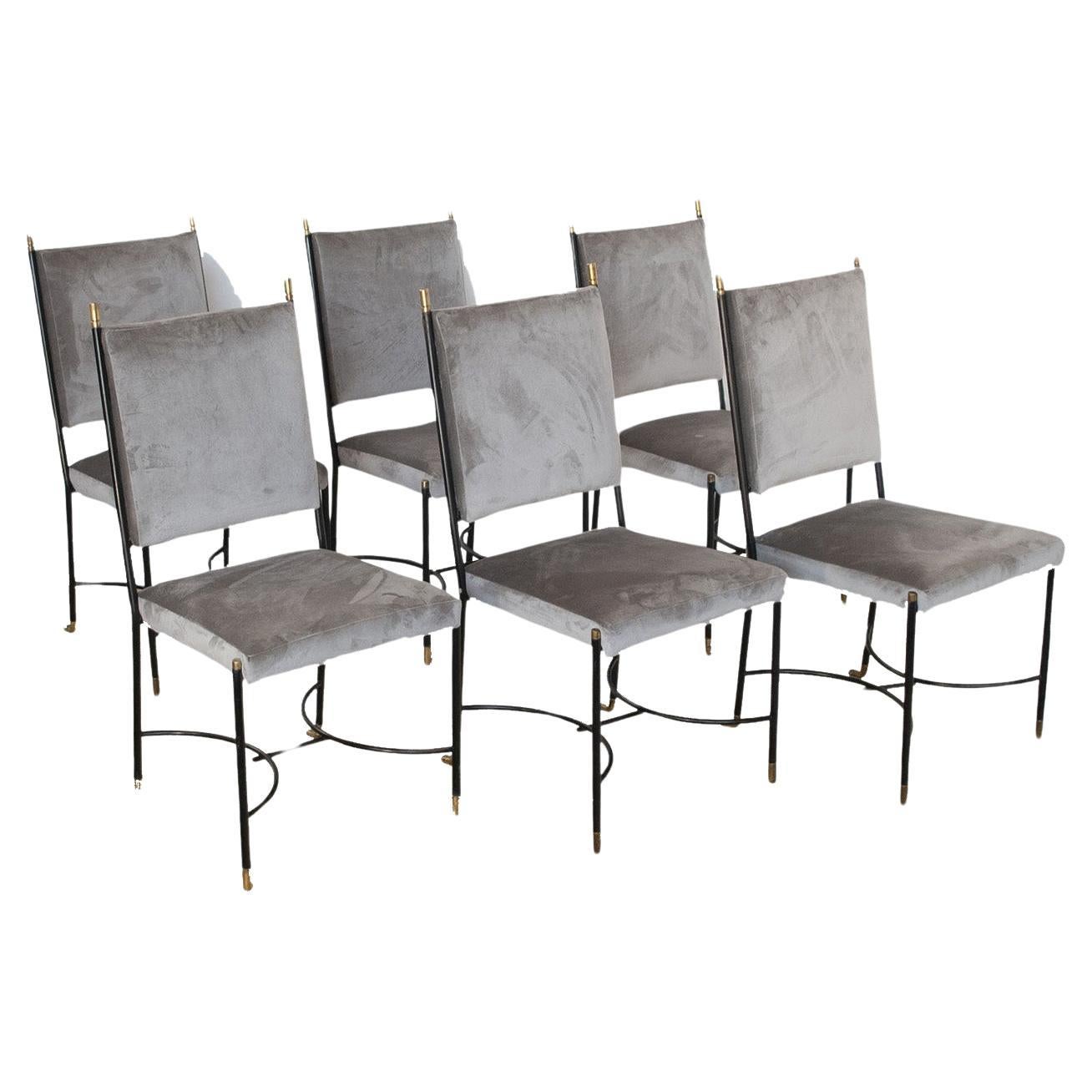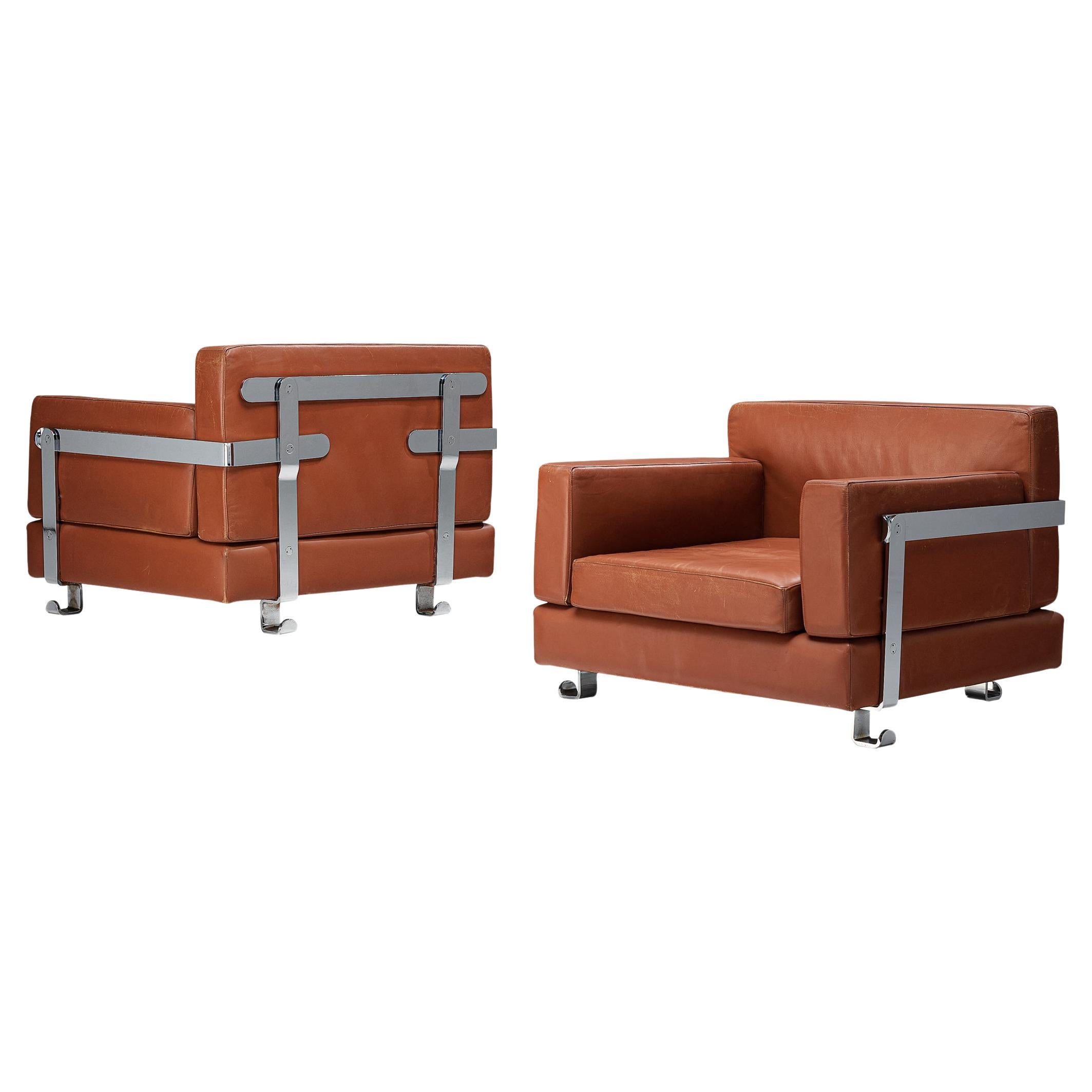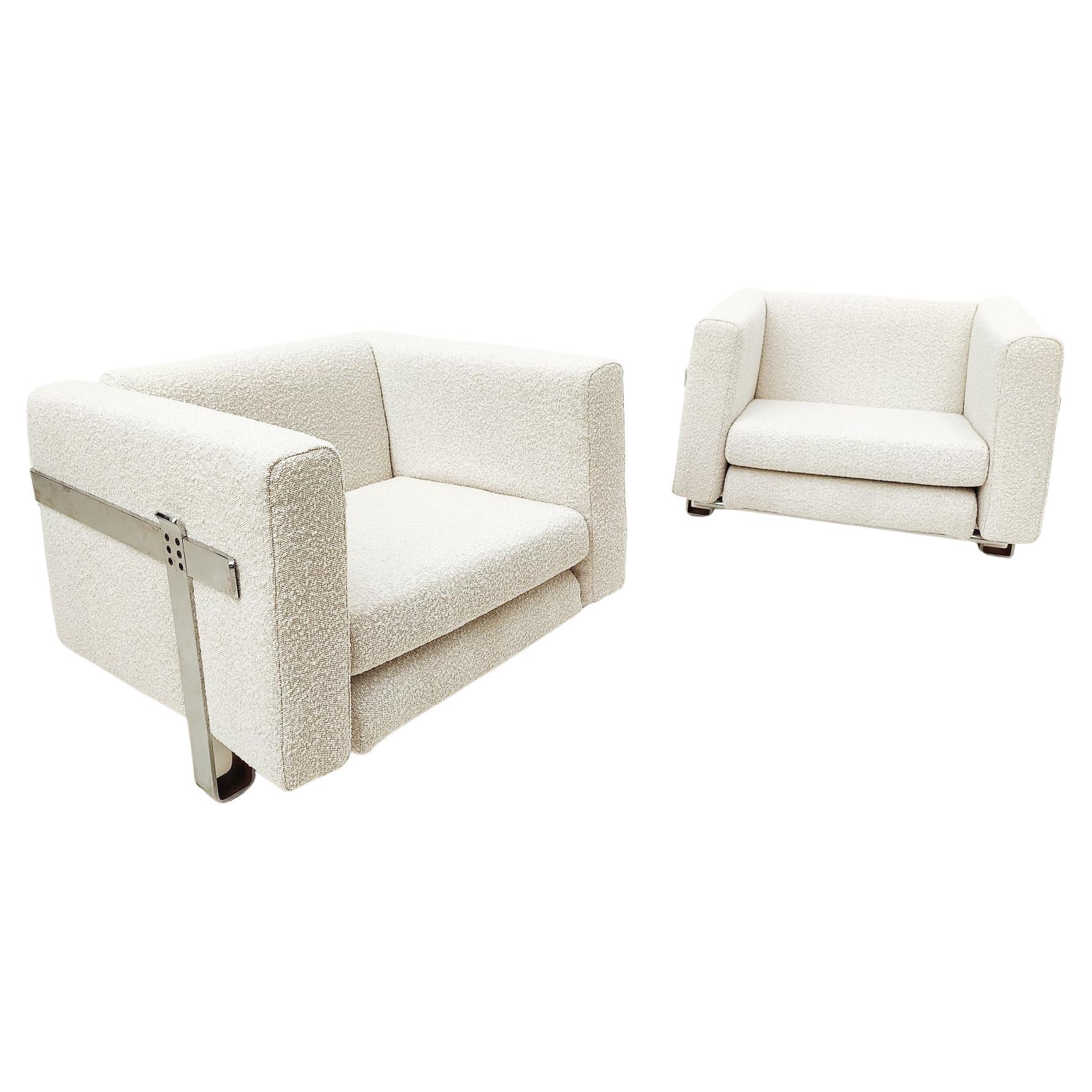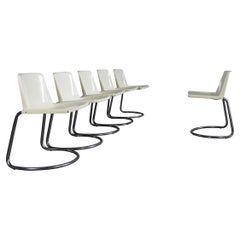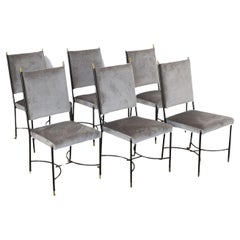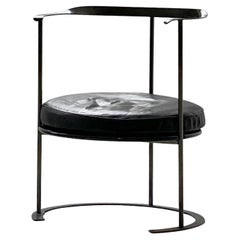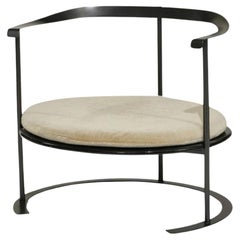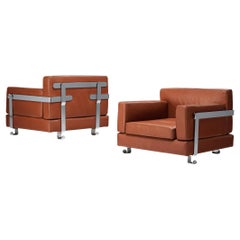Luigi Caccia Dominioni Set of Six Catilina Chairs in Steel and Fabric Azucena
About the Item
- Creator:Luigi Caccia Dominioni (Designer),Azucena (Manufacturer)
- Design:
- Dimensions:Height: 27.56 in (70 cm)Width: 22.84 in (58 cm)Depth: 18.51 in (47 cm)Seat Height: 15.75 in (40 cm)
- Sold As:Set of 6
- Style:Mid-Century Modern (Of the Period)
- Materials and Techniques:
- Place of Origin:
- Period:
- Date of Manufacture:Late 1950s
- Condition:Wear consistent with age and use.
- Seller Location:Montecatini Terme, IT
- Reference Number:1stDibs: LU5304227284922
Luigi Caccia Dominioni
To join the centenarian club is a remarkable feat in itself, but to live for over a century and leave a lasting impact on the world of Italian mid-century modern furniture design — just as pioneering industrial designer and architect Luigi Caccia Dominioni had — is extraordinary. His vintage table lamps, coffee tables, chairs and other furnishings are demonstrative of exemplary technique, theory and quality workmanship — all characteristics of the Milanese designer’s signature style.
Caccia Dominioni graduated from Milan’s oldest university, the Polytechnic University of Milan, in 1936. A leading center for design innovation during the first half of the 20th century, the institution’s alumni includes notable Italian architects and designers such as Gio Ponti, Vittoriano Vigano and brothers Livio and Pier Giacomo Castiglioni. In 1937, the Castiglioni brothers and Caccia Dominioni opened a multi-award winning studio together and presented groundbreaking designs for radios in Bakelite shells at the 1940 Milan Triennial.
The Second World War forced Caccia Dominioni to pause his professional ambitions in order to serve in the Italian military, and the postwar years saw much of his most esteemed designs take shape. In 1947, alongside Ignazio Gardella and Corrado Corradi Dell’Acqua, Caccia Dominioni founded the furniture manufacturing company Azucena, where he designed iconic pieces such as the Catalina chair and a range of lighting that includes the Lp10 wall light, the Lsp3 wall light and the Lsp6 flush mount light.
Like a fine Italian wine, Caccia Dominioni got even better with time. He collaborated with the likes of Olivari and Lualdi well into his 80s, debuting legendary pieces such as the C.d.o. chair and the Super door. And while many of his celebrated architectural works materialized during the 1950s and 1960s — such as the Teatro Filodrammatici and the Galleria Strasburgo — one of Caccia Dominioni’s best known structures, the fountain in Milan’s Piazza San Babila, was built near the end of 20th century when the designer was 83 years old.
Caccia Dominioni was a winner of the Compasso d’Oro, one of the oldest and most prestigious awards in the design industry. When he died at 103 in 2016, he left behind an exceptional legacy of furniture design and architectural innovations.
Find vintage Luigi Caccia Dominioni chandeliers and pendants, floor lamps, armchairs and other furniture on 1stDibs.
Azucena
Vintage Azucena furniture is elegant and inviting — the esteemed mid-century Milanese manufacturer’s wall lights, armchairs and side tables, which are marked by simple symmetry and thoughtfully contrasting materials, can likely be found in the living rooms of design lovers all over Italy.
Azucena was founded in 1947 by three leading figures of 20th-century Italian architecture: Luigi Caccia Dominioni, Ignazio Gardella and Corrado Corradi Dell’Acqua. The trio initially established Azucena in order to furnish the interiors of buildings they’d designed but found a robust business opportunity in manufacturing individual pieces from those collections for postwar consumers. And as the company founders borrowed the brand name from a conniving character in the Giuseppe Verd opera Il Trovatore, it is appropriate, then, that the furniture for which Azucena is known is practical but exudes a hint of playfulness.
The best of Italian modernism combines cheekiness and bold functionality with provocative and thoughtful design, and Azucena is deeply rooted in that tradition. While its brass-and-walnut mid-century-modern-era dining tables and stackable coffee tables — created by the likes of Dell’Acqua and Vico Magistretti — are exceptionally unobtrusive in small spaces and framed in clean lines, Dominioni designed chunky, enveloping armchairs during the 1970s upholstered in striking red fabric.
Among Azucena's most successful and iconic designs is also Dominioni's most famous piece of furniture: the minimalist Catalina chair. After it debuted at the Milan Triennial in 1957, the Catalina chair, with its generously curving enameled steel frame and plush leather cushion, became an instant sensation. Dominioni’s other enduring designs for Azucena include the Monachella lamp, the ABCD armchair and the versatile Cilindro ottoman.
Italian furniture manufacturer B&B Italia acquired Azucena in 2018 and has reissued a number of designs from the legendary brand’s portfolio, such as the Imbuto lamp, the Catalina armchair and the Cavalletto table.
On 1stDibs, find vintage Azucena lighting, tables, seating and more.
- ShippingRetrieving quote...Ships From: Florence, Italy
- Return PolicyA return for this item may be initiated within 7 days of delivery.
More From This Seller
View AllVintage 1970s Italian Mid-Century Modern Furniture
Metal
Vintage 1980s Italian Post-Modern Chairs
Steel, Sheet Metal
Vintage 1940s Italian Mid-Century Modern Chairs
Wood
Vintage 1970s Italian Mid-Century Modern Chairs
Metal
Vintage 1980s Italian Modern Chairs
Metal, Sheet Metal
Vintage 1960s Italian Mid-Century Modern Chairs
Brass
You May Also Like
Vintage 1960s European Mid-Century Modern Chairs
Metal, Brass
21st Century and Contemporary Italian Armchairs
Iron
20th Century Italian Mid-Century Modern Armchairs
Steel
Vintage 1960s Italian Mid-Century Modern Chairs
Metal
Vintage 1950s Italian Mid-Century Modern Sofas
Metal
Vintage 1960s Italian Mid-Century Modern Chairs
Chrome
